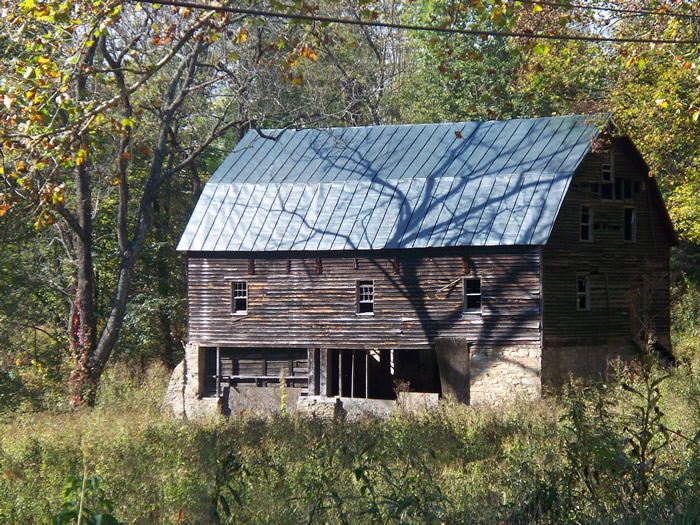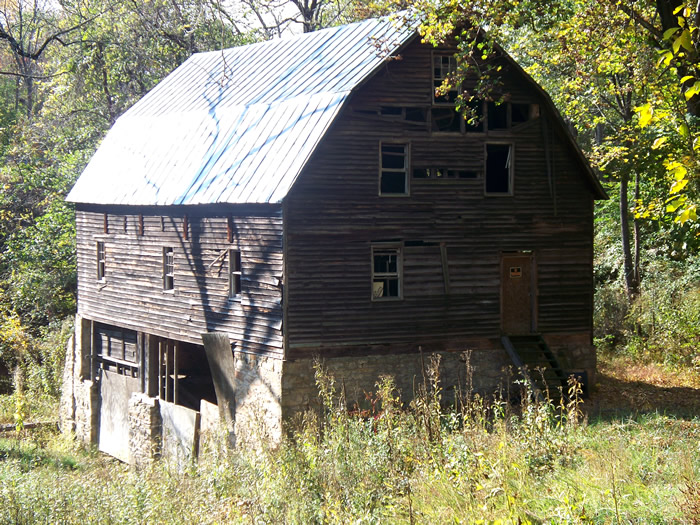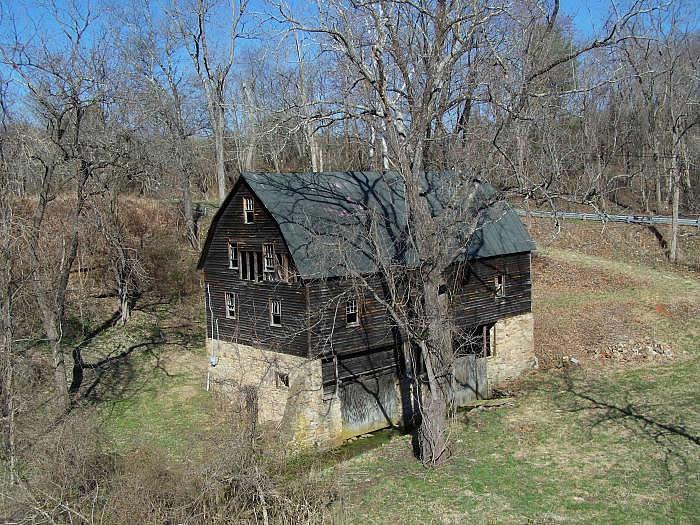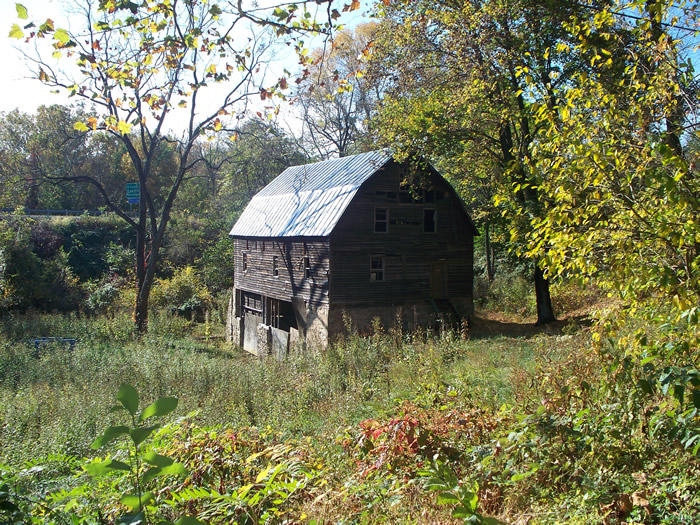
Wesset's Mill / Calvert's Mill / Washington Mill / Jett Mill / Baggerly Mill
Rappahanock Co. | Virginia | USA
Watersource: Rush River.
Wesset's Mill / Calvert's Mill / Washington Mill / Jett Mill / Baggerly Mill
On Old Mill Rd, on the eastern edge of the small town of Washington, Va., which is just west of US 211.

Redd's Mill/Rush Mills served the town of Washington from the late 1700's to the late 1800's. It is not known who built the mill or when. In 1777, Mordicai Redd purchased a tract of 430 acres, including a mill, on the Rush River. Whether Redd built the current mill or if it was the one already there, it is believed that a portion of the present structure was the original mill.

Two years later Redd sold the mill tract to George Calvert Jr. In three transactions dated 1787, 1794, and 1800, the Calverts sold the mill and land to the Garwoods, who had worked as millers for the Calverts. Philip Slaughter bought the mill, the deed mentions a grist mill and a saw mill, from the Garwoods in 1805 for $6,000. Slaughter sold the mill to Jeremiah Strother, a descendent of the family that received the first land grant in 1748.

Within a year, the mill was sold at auction to Samuel Berkeley. Berkeley owned the mill until 1819, when it was purchased, only 25 acres now, by George Calvert Jr. William Pendleton bought the property in 1822; but following his death in 1827, the mill remained in his estate until 1833 when his widow sold her interest to Daniel Mason.

By 1838 Mason was in financial trouble and "Rush Mills" was sold at auction in 1840. Elijah Cheek bought the mill for $3,000. Cheek is given credit for the first addition to the mill as tax assessment increased from $850 to $1,900/year.

A deed of 1846 shows the mill operated by Garner E. Burgess, who purchased the mill from Cheek four years later. Burgess was probably the resident miller. John Jett bought the mill from Burgess in 1855-57. Jett added $1500 worth of improvements in 1860, as the mill remained in Jett's possession throughout the Civil War. In the 1970's, there was a good bit of equipment still in the mill. In 1979, Mr. Peter Kramer purchased the mill with plans to restore it to commercial use. Mr Kramer has a business/craft of building fine period pieces of excellent quality furniture. He probably hoped to restore the mill to use as a workshop/showroom; but in 2008, the mill was steadily deteriorating.